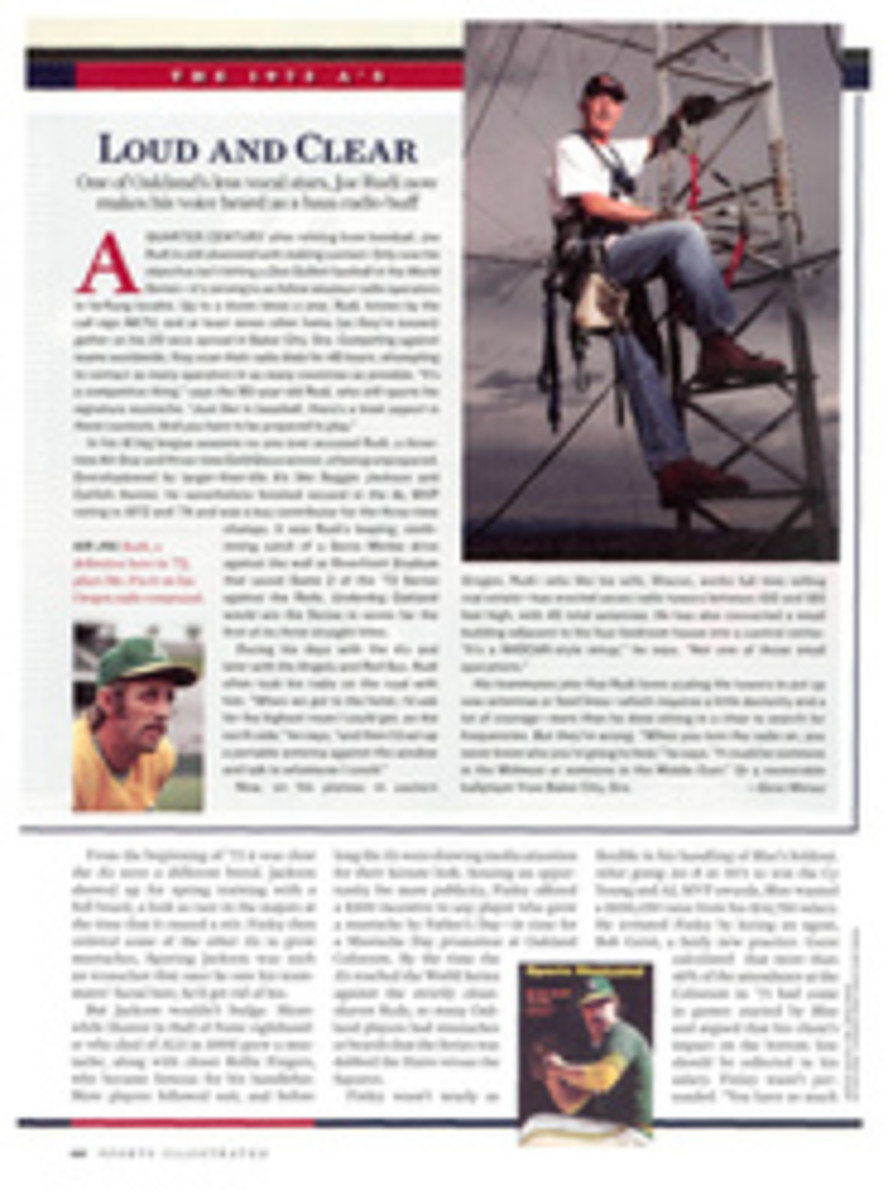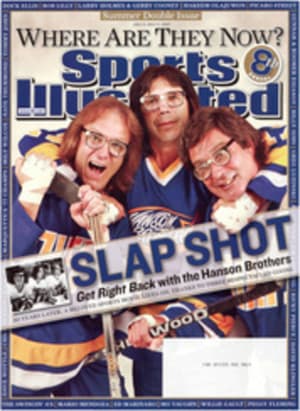
Trading Punch Lines
The brand-new Lincoln Navigator rolling down Pennsylvania's Route 22 on this balmy June day is a major hunk of luxury automotive engineering, but the two men sitting up front make it feel almost cozy. Twenty-five years before, to the very week, they fought for the heavyweight title, under the harshest of public spotlights. But today Larry Holmes and Gerry Cooney are just a couple of old pals heading out for lunch.
"Gerry, I'm driving, so you know you better put on your belt," says Holmes, showing more concern for the well-being of his passenger than he did on the night of June 11, 1982, when he hammered out a 13th-round TKO of Cooney to defend his title in Las Vegas.
"I hear that, bro," says Cooney with a broad grin, clicking his shoulder strap into place as Holmes guns the Navigator around a dawdling Toyota. Cooney shakes his head. "I keep telling you, Larry, you got to take up golf. Relax a little."
The two old foes see each other every few months at boxing events and charity functions. Today it's a photo shoot at Holmes's office in Easton, Pa.—sandwiched between Cooney's round of golf ("Thirty-eight on the front nine!") and Holmes's flight to Atlantic City for an evening at the casinos. Their verbal sparring continues as Holmes, 57, and Cooney, 50, catch up on mutual friends and family and compare notes on the state of their sport. Ultimate Fighting comes up. "It's on TV every day," notes Holmes. Says Cooney, his jaw clenched and eyes wide in mock ferocity, "Yeah? I'd like to get you in that cage."
Such camaraderie is in marked contrast to the vitriol that surrounded their 1982 bout, when Holmes was the undefeated but largely unappreciated champion and the hard-punching Cooney—also undefeated but untested in his 25 bouts—was cast as the Great White Hope. A disdainful Holmes called him the Great White Dope, while Cooney declared the champ had "no class." The promotion was marked by bad blood all around. "White people would come up to me and say, 'You gotta beat him,' " recalls Cooney over cheeseburgers at a modest eatery in a Bethlehem, Pa., strip mall. Holmes laughs. "White people were coming up to me saying, 'Gerry's gonna knock you out,' " he says.
Two patrons approach the fighters and ask if they'd pose for a photo. "No problem," says Cooney, jumping up to stand beside Holmes. "That'll be five bucks"—he laughs—apiece."
Back on their stools, Holmes says, "People should take a page out of our book and realize you can get along with anyone."
After beating Cooney in what he calls his best performance, Holmes would defend his world title eight times before losing in 1985 on a controversial decision to Michael Spinks. After another loss to Spinks the following year, Holmes retired, only to make an ill-fated comeback in '88, when he got knocked out (for the only time in his career) by Mike Tyson. Two years later Holmes returned to the ring, and he boxed until 2000, his last fight a 10-round decision over 334-pound sideshow Eric Esch, a.k.a. Butterbean. "I wanted to get to 75 fights," Holmes says. (His final record was 69-6, with 44 KOs.) Was it worth it? "Hell, yes," he says. "I made an extra $11 million."
Holmes always liked his money—and he kept more of it than most fighters. "Every time I made a title defense I bought a piece of property," he says. He acquired so much real estate in and around his hometown of Easton that at one time it felt a little like a Larry Holmes theme park. Though he has sold some of his holdings, he still owns a gym there, the Larry Holmes Training Center, as well as the Larry Holmes Ringside Restaurant and Lounge, which occupies the ground floor of the Larry Holmes Enterprises building, which stands on Larry Holmes Drive, which runs along a river somehow still known as the Delaware.
"Hey, I'm 57, I'm alive and well and hanging in," says Holmes, who lives in Easton with Diane, his wife of 27 years. "While I'm here on this earth I'm going to enjoy myself."
Cooney, likewise, is a firm believer in savoring life—he moves through the world with seemingly unquenchable goodwill, greeting even strangers with playful banter. It has not always been easy, though. After the loss to Holmes he battled depression and abused alcohol. He fought only five more bouts, winning three but losing by KO to Spinks in 1987 and to George Foreman in 1990. Sober since '88, he has devoted much of his time over the past decade to FIST (Fighters' Initiative for Support and Training), a foundation he and his wife of 13 years, Jennifer, created in '98 to provide job training and placement for struggling former fighters. Says Cooney, who lives in Fanwood, N.J., "I'm just glad to be in the picture."
Back in the Navigator, Holmes—his right foot clearly as heavy as his left jab once was—weaves through traffic on the trip back to Easton. That plane to A.C. is waiting. Still, talk of the old days has put him in a contemplative mood. "Hard to believe it's been 25 years," he says. "Bang, Gerry! It's like a blink."
"You know what the lesson is?" says Cooney, with a small shake of his head. "It's that time goes too fast. . . ." A pause, and then the wide-eyed grin as he looks over at his friend behind the wheel. "And so does Larry!" The two men laugh.

